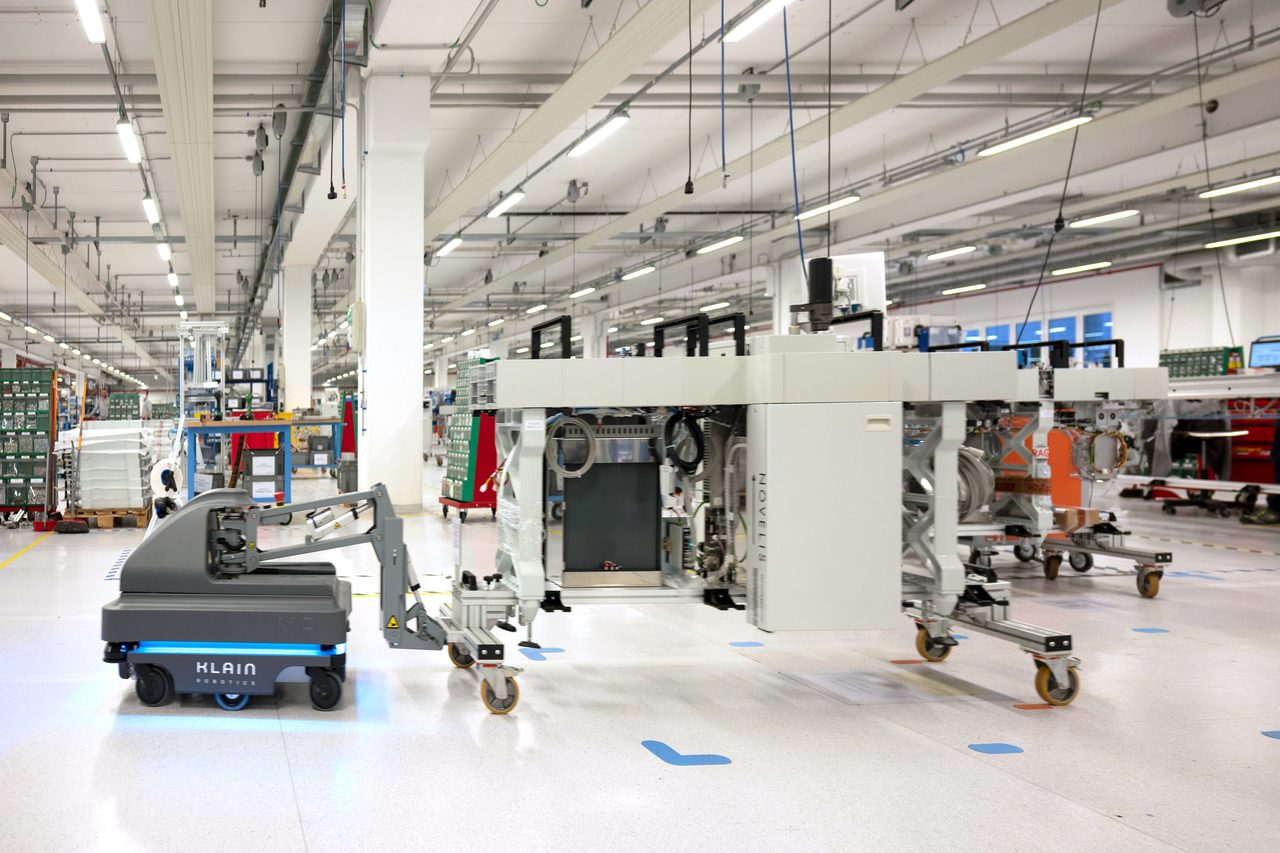Robotics
Follow the Path to a Successful
AMR Deployment
Robotics
Follow the Path to a Successful
AMR Deployment
As with any automation deployment, a good approach is to think big but start small. By Matt Charles
Automating repetitive and hard-to-staff material handling processes within manufacturing facilities has long been considered a complex and costly process, typically requiring large investments, teams of engineers and programming specialists and long months before they are doing the job expected of them. This can be especially true with any automation that requires built in technologies and changes in infrastructure, such as automated guided vehicles (AGVs) that run on tracks or magnets built into a facility’s floor.
Fortunately, the emergence of autonomous mobile robots (AMR), which can independently transport materials around a facility using built-in Lidar scanners and 3D cameras, can make automating these tasks faster, less expensive and easier to deploy overall. As a result, it’s easy to see why these mobile robots are being deployed at such a rapid pace over the last few years. In fact, recent statistics show global shipments seeing a 65% annual growth rate in 2022 over 2021 with global shipments expected to exceed 500,000 by 2030 (ABI Research).
Deploying these mobile robots aren’t without their challenges, however. As with any major undertaking, a well-planned, step-by-step approach makes it much more likely you’ll reach your desired destination quickly and painlessly.
Consider these steps to help you feel confident in each stage before proceeding to the next.

STAGE 2: Deployment
As with any automation deployment, a good approach is to think big but start small. Complexity increases as you add robots, from fleet management software and integrations to traffic considerations and space for robots when they’re charging or waiting for missions.
Choose your application: Consider starting with an easy-to-deploy high-return application to get your bearings. Consider transporting components between warehouse and production with simple missions that optimizes productivity. Use AMRs to remove trash and other waste to keep the production floor clear and safe and improve overall efficiencies. Regularly collecting samples from production lines and quality control analysis catches manufacturing issues early and reduces waste.
Review the application: If you haven’t brought in a system integrator before, now might be the time to use their expert application teams to provide guidance on your AMR design and implementation to make sure your project gets off to a good start. Review project specs, fleet integration with Wi-Fi coverage, service requirements and remote access, and establish service contracts, especially for after commissioning. You should also establish or review a project timeline to align resources, calculate robot number and types as well as routes and purposes (bus route, call buttons, or automated). Check the facility layout, including distances and parts per hour, preferred paths and width of aisles for bi-directional traffic of the mobile robots.
Conduct a risk assessment: For any mobile robot deployment, conduct a risk assessment to ensure employee safety. While the robot manufacturer is responsible for delivering an AMR that meets safety standards, integrators and end users must also follow appropriate safety directives, international standards and best practices.
Perform a pilot program: An AMRs user-friendly interface and intelligent sensors and software mean your team can quickly create maps and simple missions on your own. Using this program as a proof-of-concept will help you learn and grow your automation plans successfully.
STAGE 3: Expand
Once you have a successful proof-of-concept under your belt, you’ll see new opportunities for automating material transport throughout your facility. The versatility and flexibility of leading mobile robots enable you to add in multiple robots to do similar tasks as the one you piloted, or even perform completely new tasks for different processes or production lines.
Again, this may be an ideal time to reengage with a system integrator or AMR vendor for help, providing a comprehensive evaluation of your new plans, help manage the project overall and even aid in upskilling your workforce. This step is critical to your success, helping employees build valuable new skills as they’re relieved from repetitive, unergonomic, and undesirable material transport tasks. A successful deployment may start with one robot champion to help lead the way, but it will require multiple champions to make it run smoothly.
Following the steps throughout these three stages – from planning to deployment to expansion – will help your organization boost productivity and stay competitive with much less complexity and cost involved.
